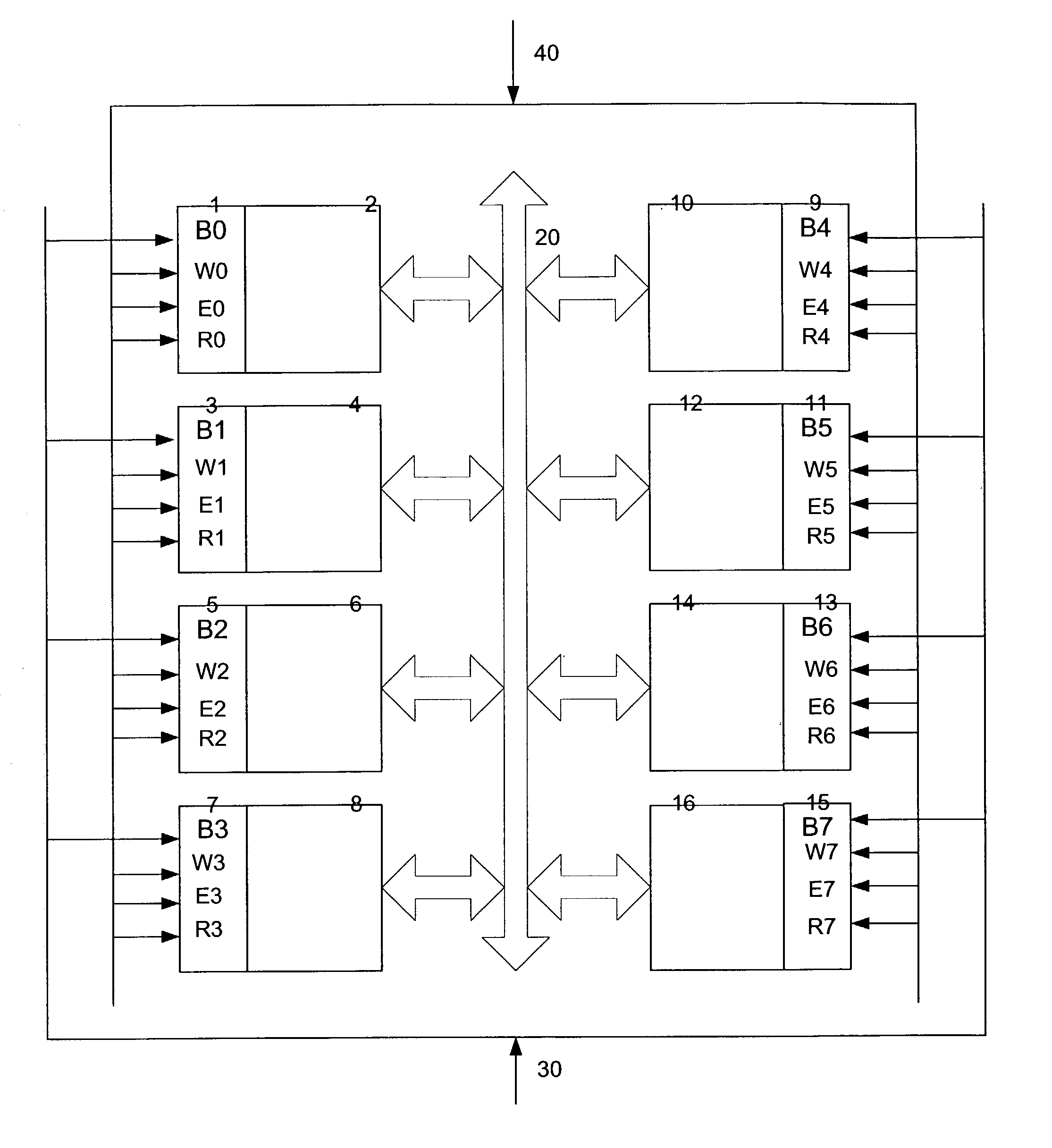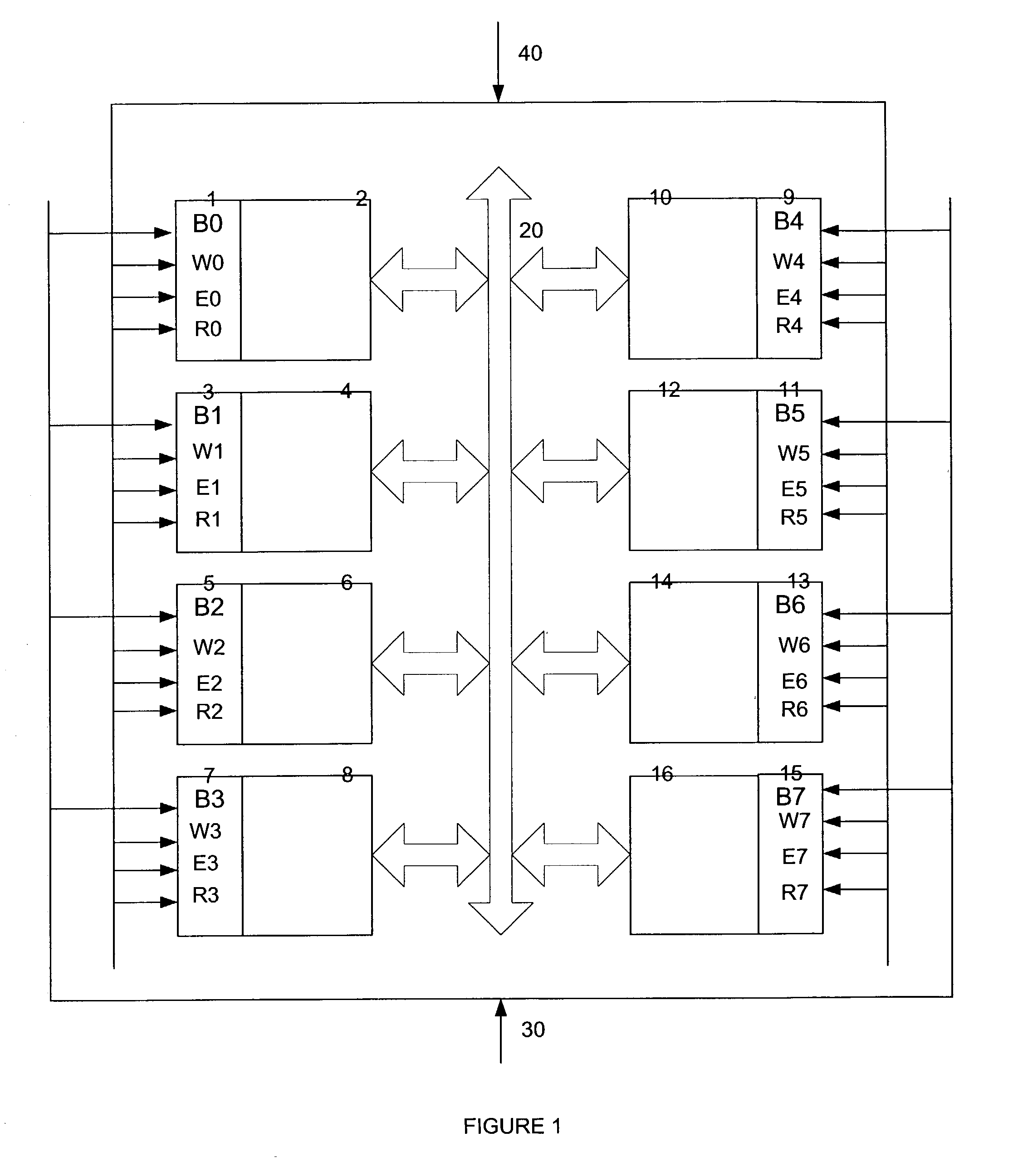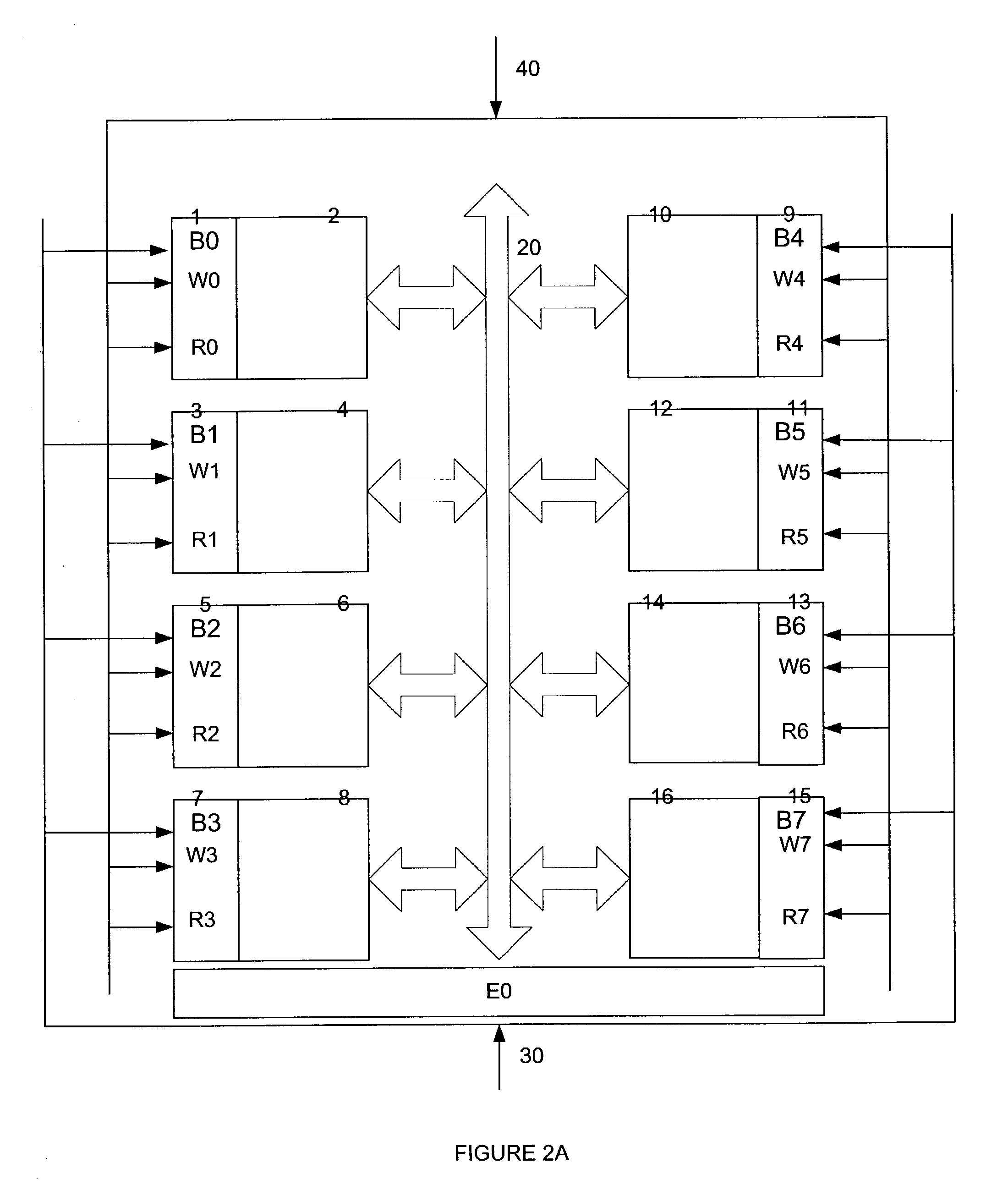Multibank memory on a die
- Summary
- Abstract
- Description
- Claims
- Application Information
AI Technical Summary
Benefits of technology
Problems solved by technology
Method used
Image
Examples
Embodiment Construction
[0019]One possible approach to improve performance of a memory is to allow more than one operation to be performed on it at a time by dividing the memory into multiple independently addressable banks. By duplicating read, write, and erase circuits, any of these operations can be performed in parallel on multiple banks.
[0020]Write and erase circuitry generates large voltages, and thus the circuits require substantial area in the substrate. Until now, duplication of such circuits hasn't been designed into nonvolatile memory fabricated on a die in storage devices. (Integrated circuits are fabricated in or on a wafer. The wafer is then diced into discrete pieces, called die, which are then packaged, possibly along with other die, to be used in electronic devices.) The monocrystalline silicon substrate used in most semiconductor devices is expensive, and duplicating write and erase circuits requires using valuable substrate area, which, for nonvolatile memory on a die in storage devices,...
PUM
 Login to View More
Login to View More Abstract
Description
Claims
Application Information
 Login to View More
Login to View More - R&D
- Intellectual Property
- Life Sciences
- Materials
- Tech Scout
- Unparalleled Data Quality
- Higher Quality Content
- 60% Fewer Hallucinations
Browse by: Latest US Patents, China's latest patents, Technical Efficacy Thesaurus, Application Domain, Technology Topic, Popular Technical Reports.
© 2025 PatSnap. All rights reserved.Legal|Privacy policy|Modern Slavery Act Transparency Statement|Sitemap|About US| Contact US: help@patsnap.com



